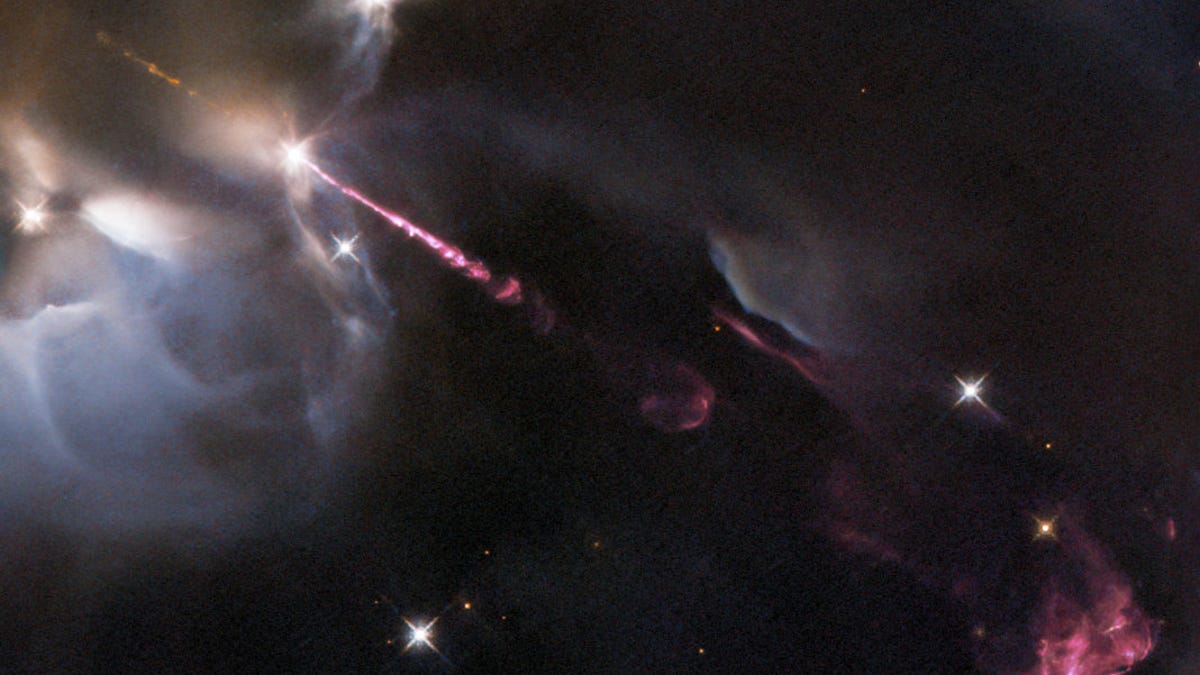See a Baby Star Having a Stellar Tantrum
Who knew a tantrum could be so beautiful?
The thought of a human having a tantrum doesn't exactly evoke positive emotions, but when a wee baby star has one, the results can be beautiful. The Hubble Space Telescope captured a view of a "stellar tantrum" as an infant star shot out "an incandescent jet of gas traveling at supersonic speeds."
Hubble is a joint project from NASA and the European Space Agency. The ethereal image shows the jet looking like a streak across space pointing at a puffy purplish formation. "As the jet collides with material surrounding the still-forming star, the shock heats this material and causes it to glow. The result is the colorfully wispy structures, which astronomers refer to as Herbig–Haro objects, billowing across the lower right of this image," ESA said in a statement shared by NASA on Friday.
The object is called HH34 and it's been the subject of Hubble's eye several times during the telescope's more than 30 years in space. HH34 is located in the Orion Nebula -- a stellar nursery -- about 1,250 light-years away from us. You can't pick out HH34 with the unaided eye, but if conditions are right, you can spot the nebula. Try this BBC Science Focus guide to help you dial it in.
Hubble's studies of HH34 and the Orion Nebula will help shape how scientists interpret data from the recently launched James Webb Space Telescope when the newcomer gets a chance to look at young stars and their jets.
Hubble might be elderly in space telescope years, but it's still kicking despite technical glitches and the rigors of life in space. May it witness many more fussy stars to come.


